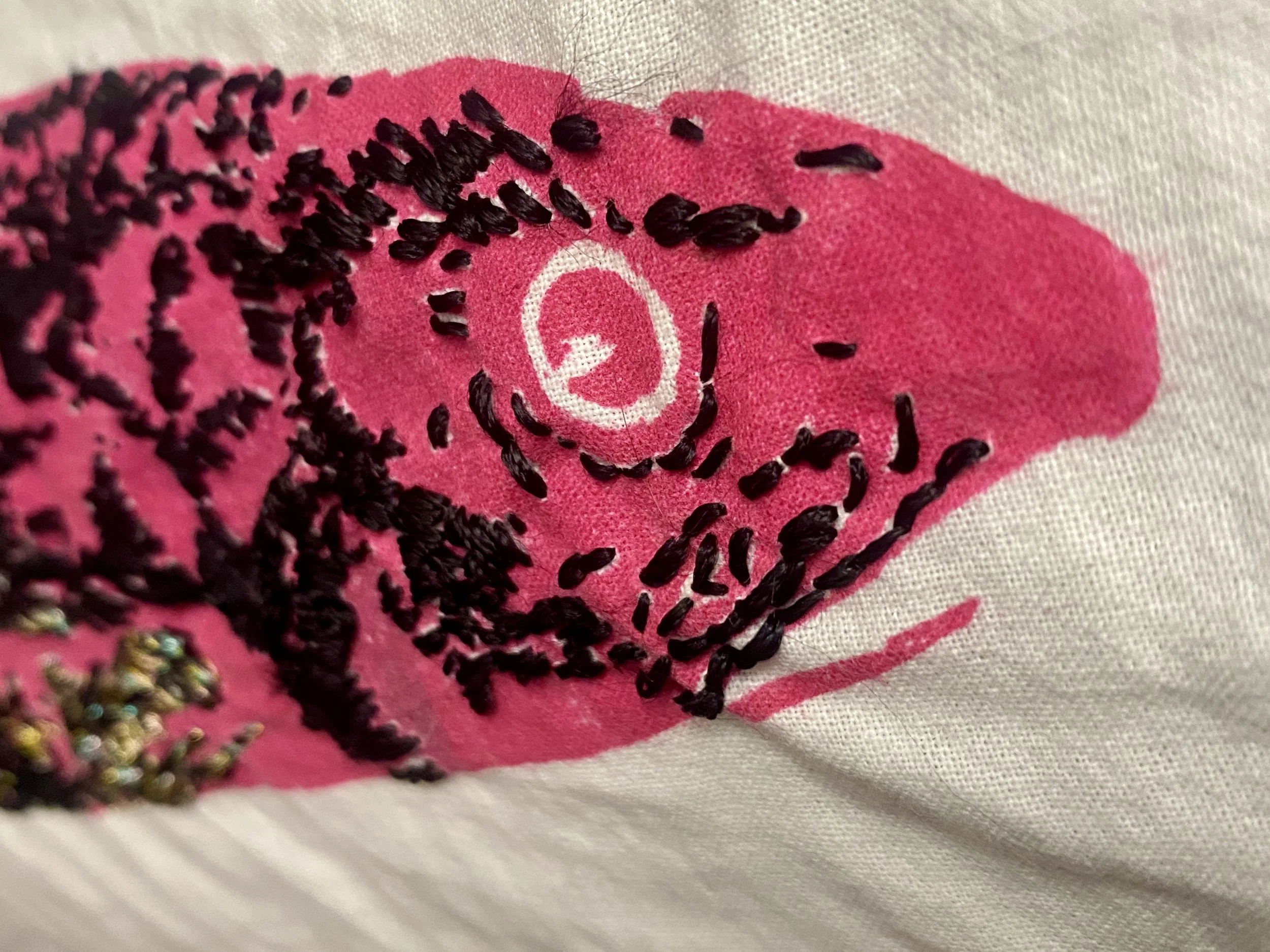Fish Studies: An Ongoing Exploration in Printmaking
This body of work represents an ongoing investigation into printmaking processes, using fish, specifically mackerel and seabass, as a formal and conceptual entry point.
The project encompasses a range of traditional and contemporary techniques including screenprint, linocut, chine-collé, and gyotaku.

I often find it difficult to determine when a piece is finished. My father, Laurie Leeson, once told me that “each work is the starting point for the next.” This sentiment continues to shape my practice
Process and Methodology
The Mackerel series began with a digital manipulation of a photographic source. Using Adobe Photoshop, I posterised the image to isolate tonal values and employed the dodge tool to lift excessive dark areas. From this base image, I generated three silkscreens using varied thresholds and inversions to explore how subtle shifts in contrast and layering affect visual perception.
The work Two Mackerel exists in two forms: one as a screenprint with added linocut and chine-collé, and another as a pure linocut. The chine-collé technique allowed me to introduce translucent textures and paper tones that interact with the printed surface, creating a sense of depth and materiality.
In contrast, the Seabass prints were produced using the traditional Japanese technique of gyotaku (gyo means “fish,” taku means “rubbing”). Originating in the mid-19th century as a method for anglers to document their catches, gyotaku has evolved into an expressive art form. By applying water-based ink directly to the fish and then pressing it to paper, in this case Japanese washi, the process captures a direct, tactile imprint. Notably, the fish can be washed and consumed after printing, reinforcing the temporality and sustainability of the method.
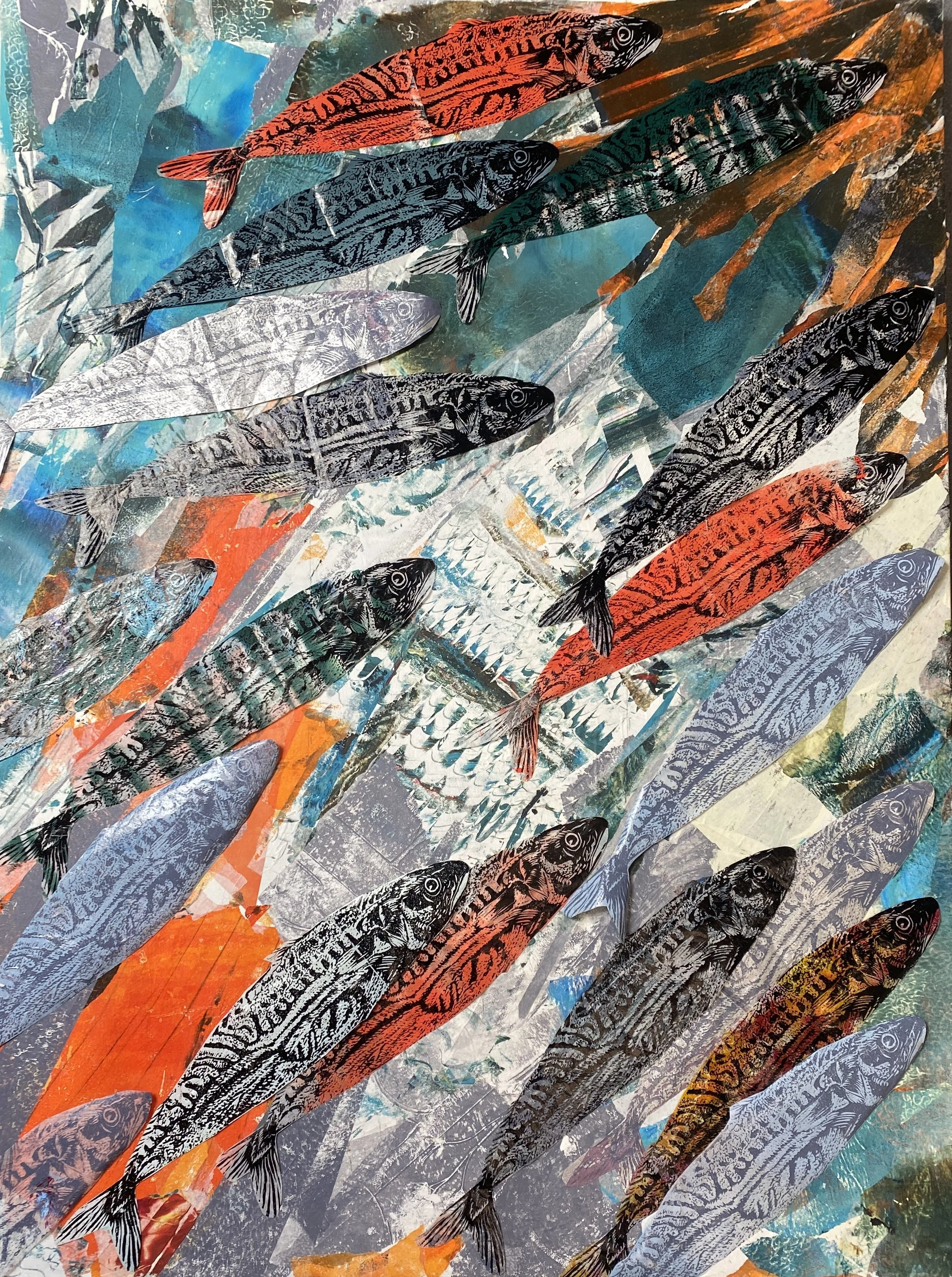

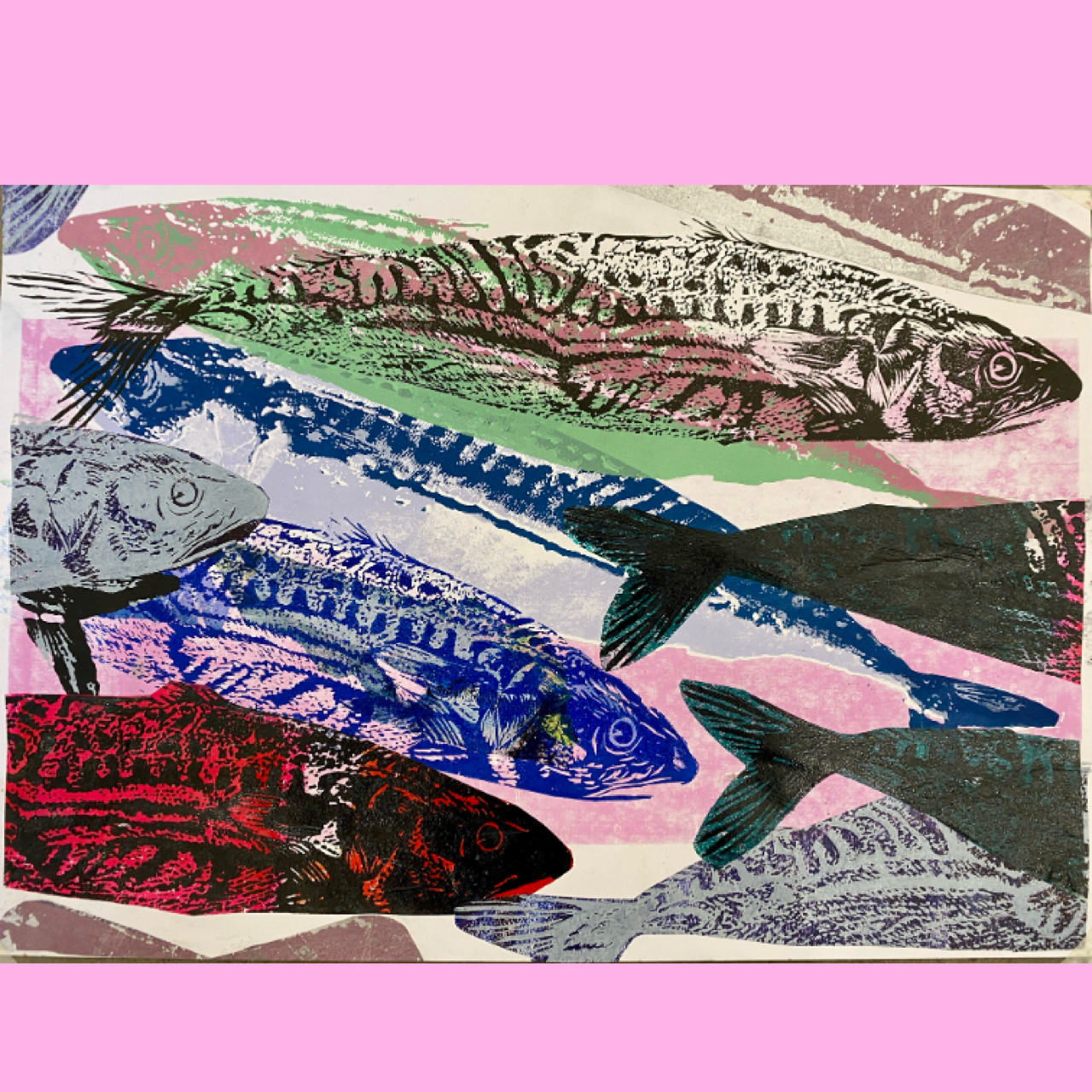
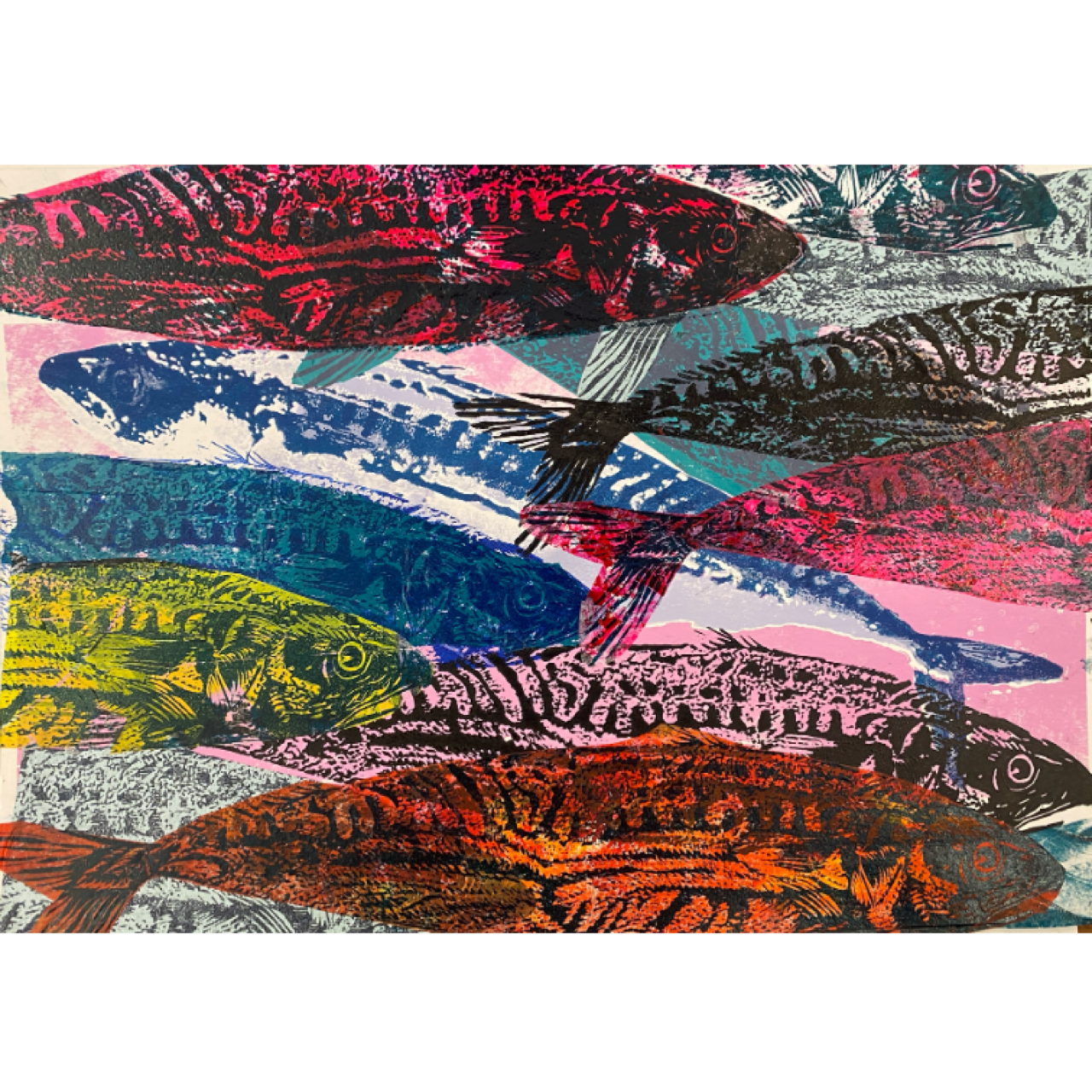
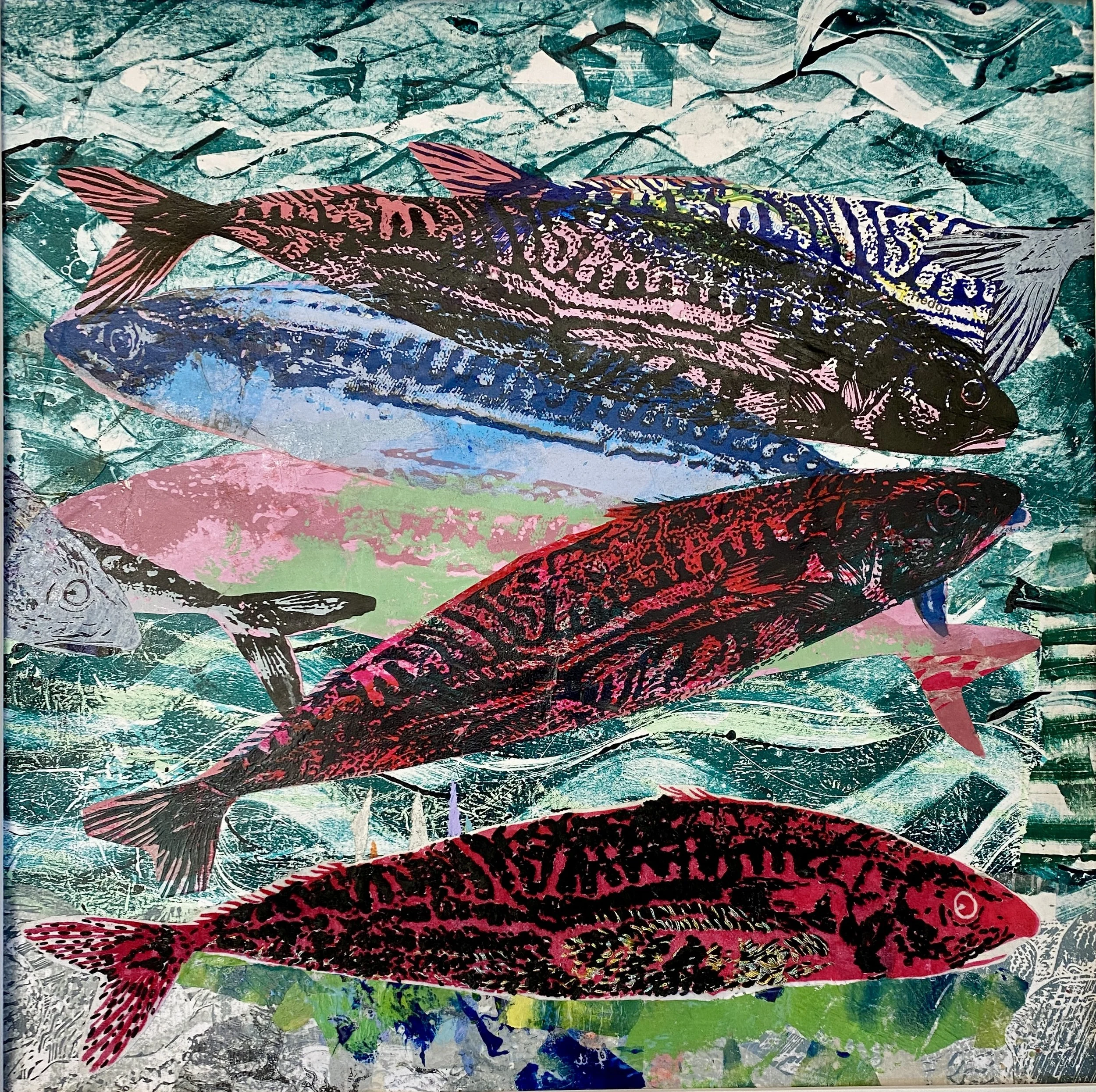
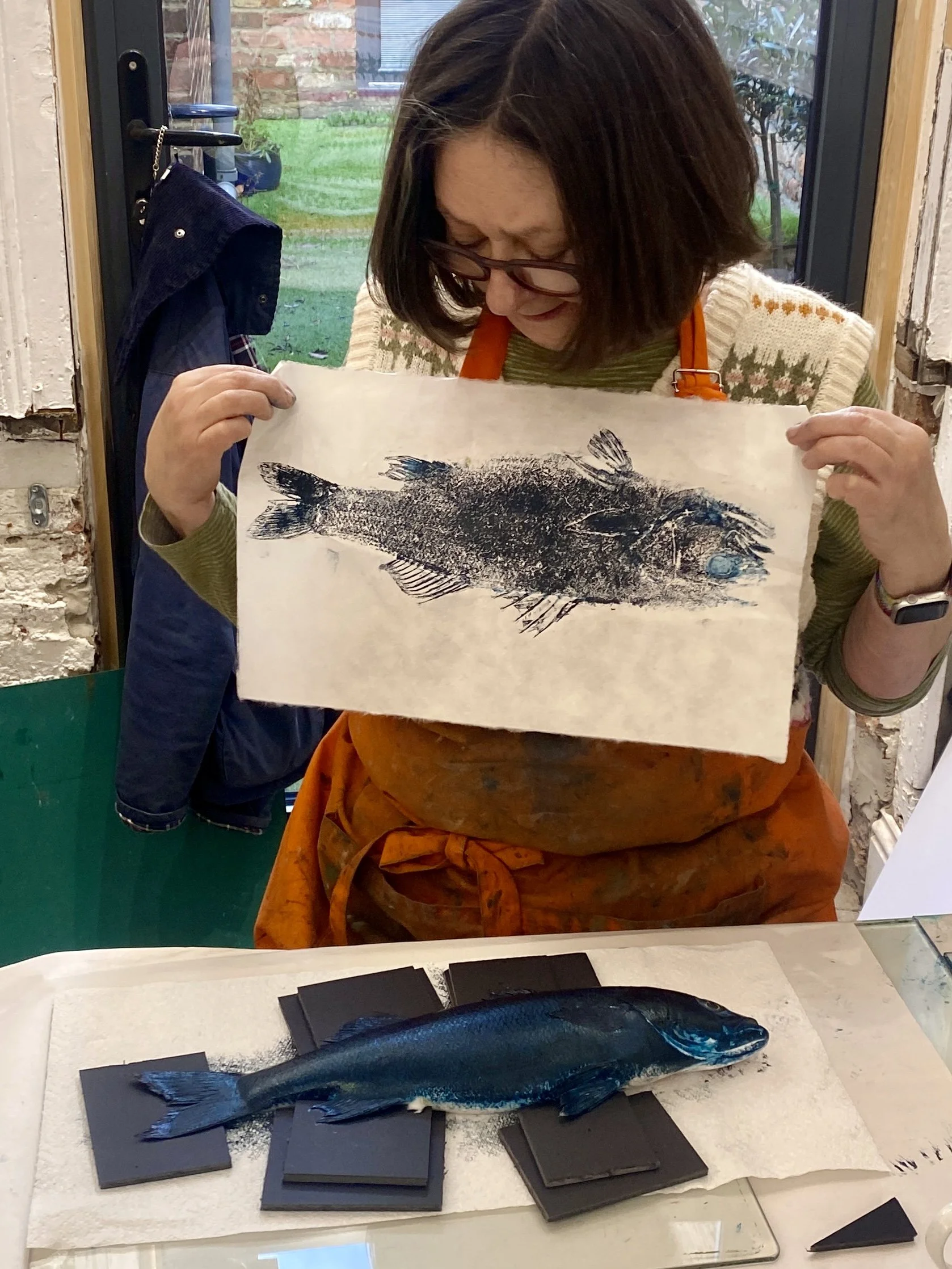

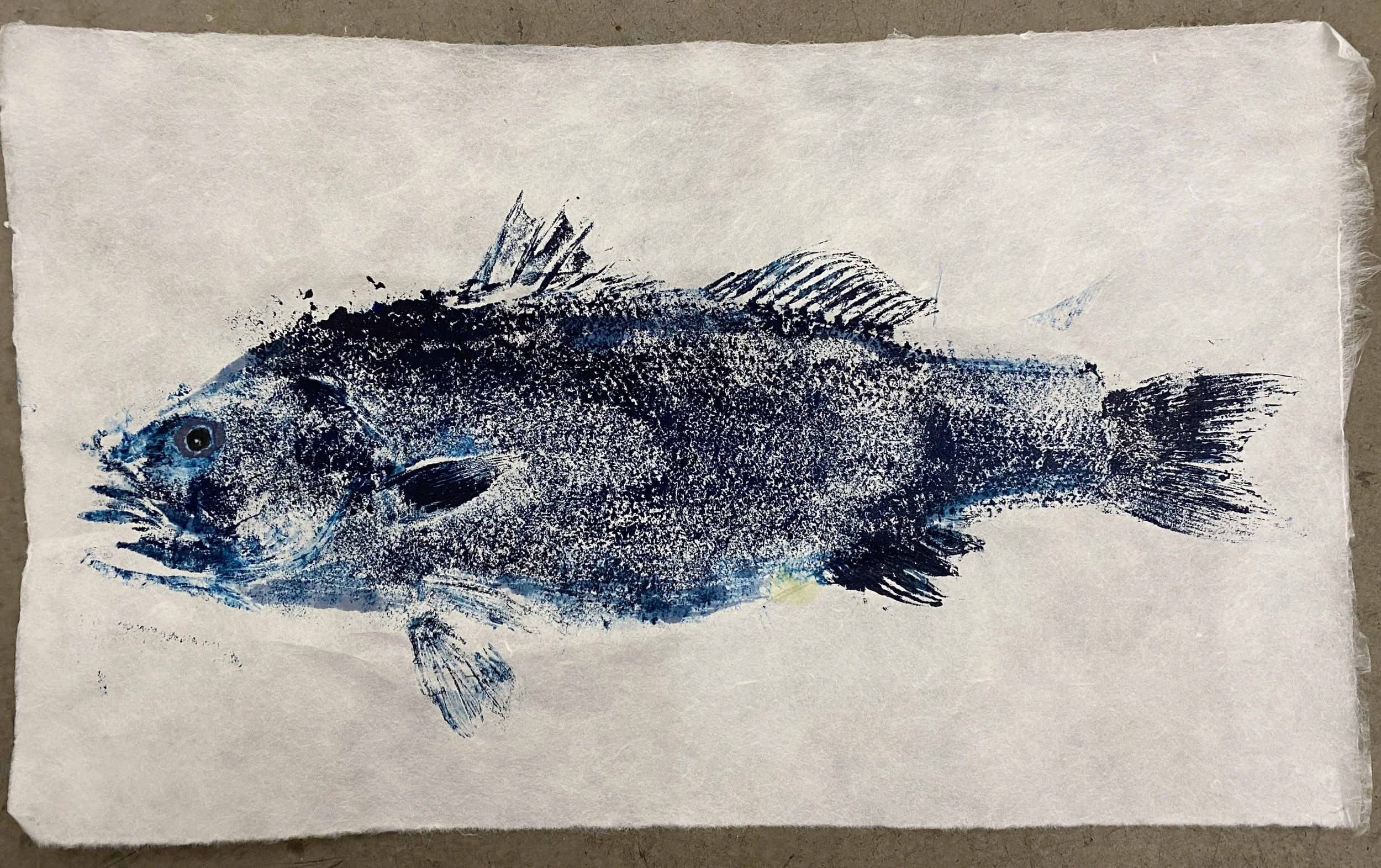

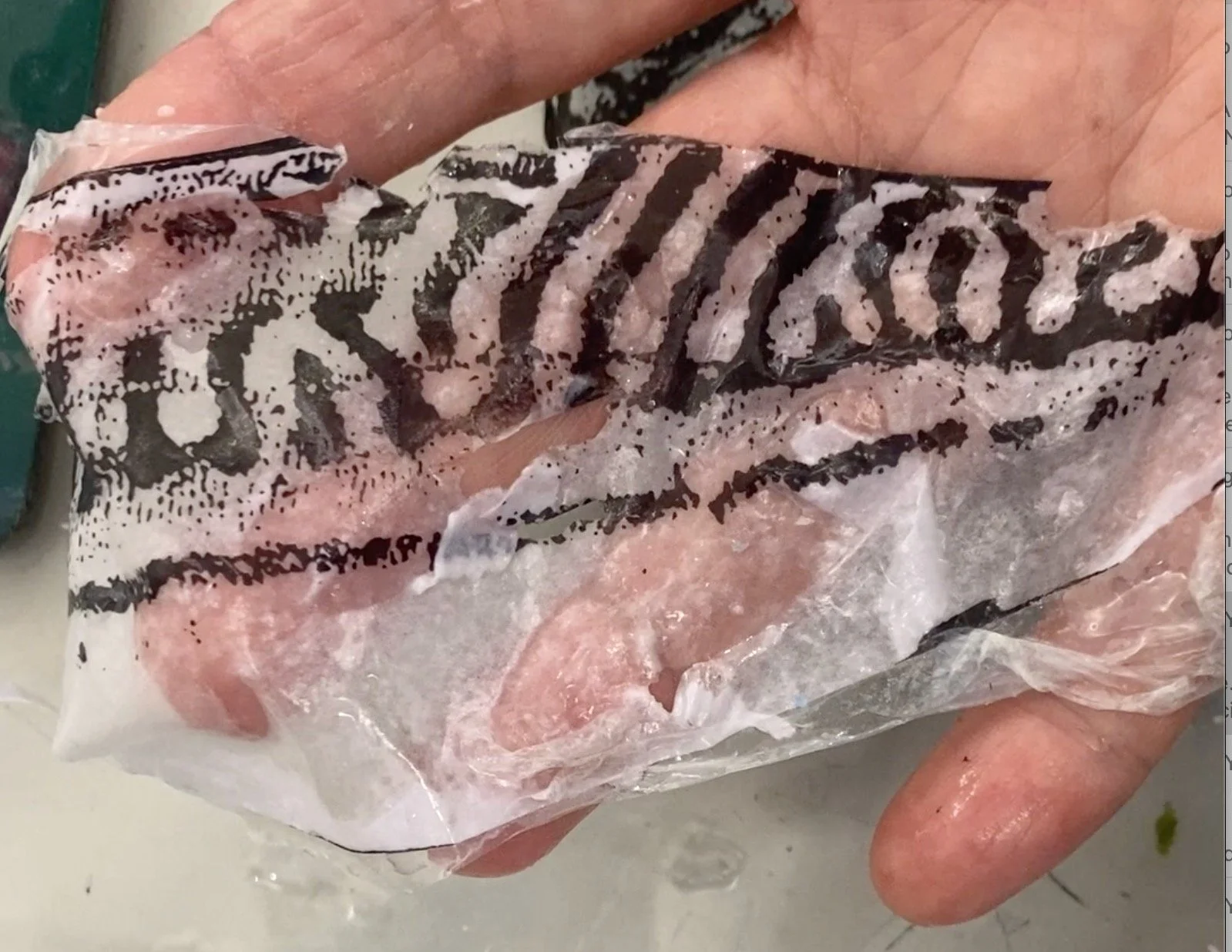

Conceptual Concerns
These works engage with questions of repetition, variation, and the relationship between representation and direct impression. The translation of organic form through mechanical and manual processes highlights tensions between control and chance.
By cycling between digital and analog methods, I aim to explore the boundaries of printmaking itself. Rather than treating it as a fixed discipline, I approach printmaking as an evolving set of practices that respond to both tradition and experimentation.


